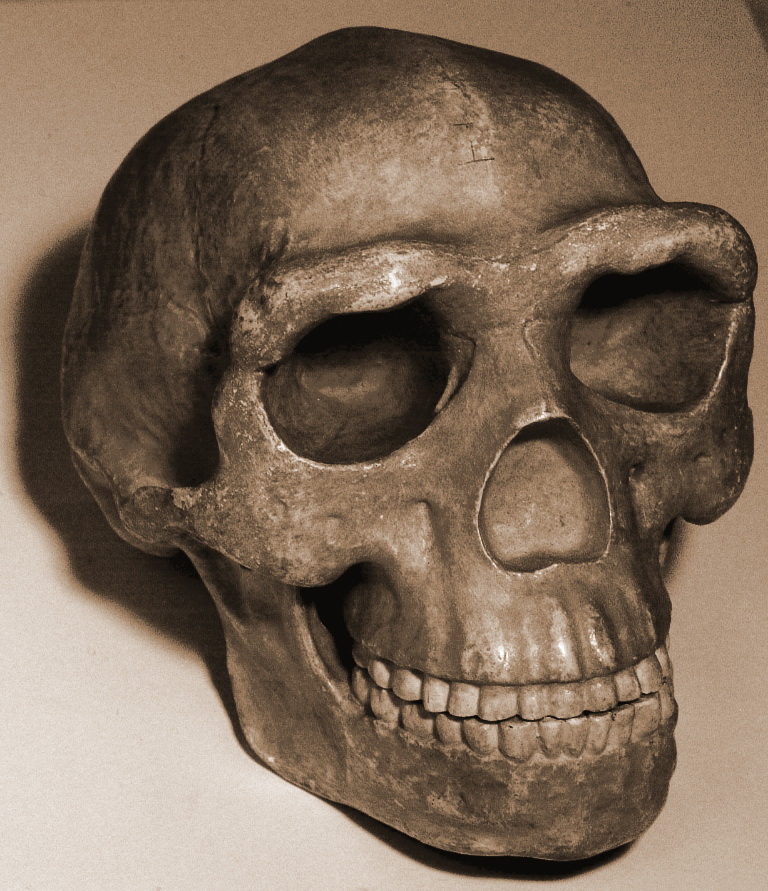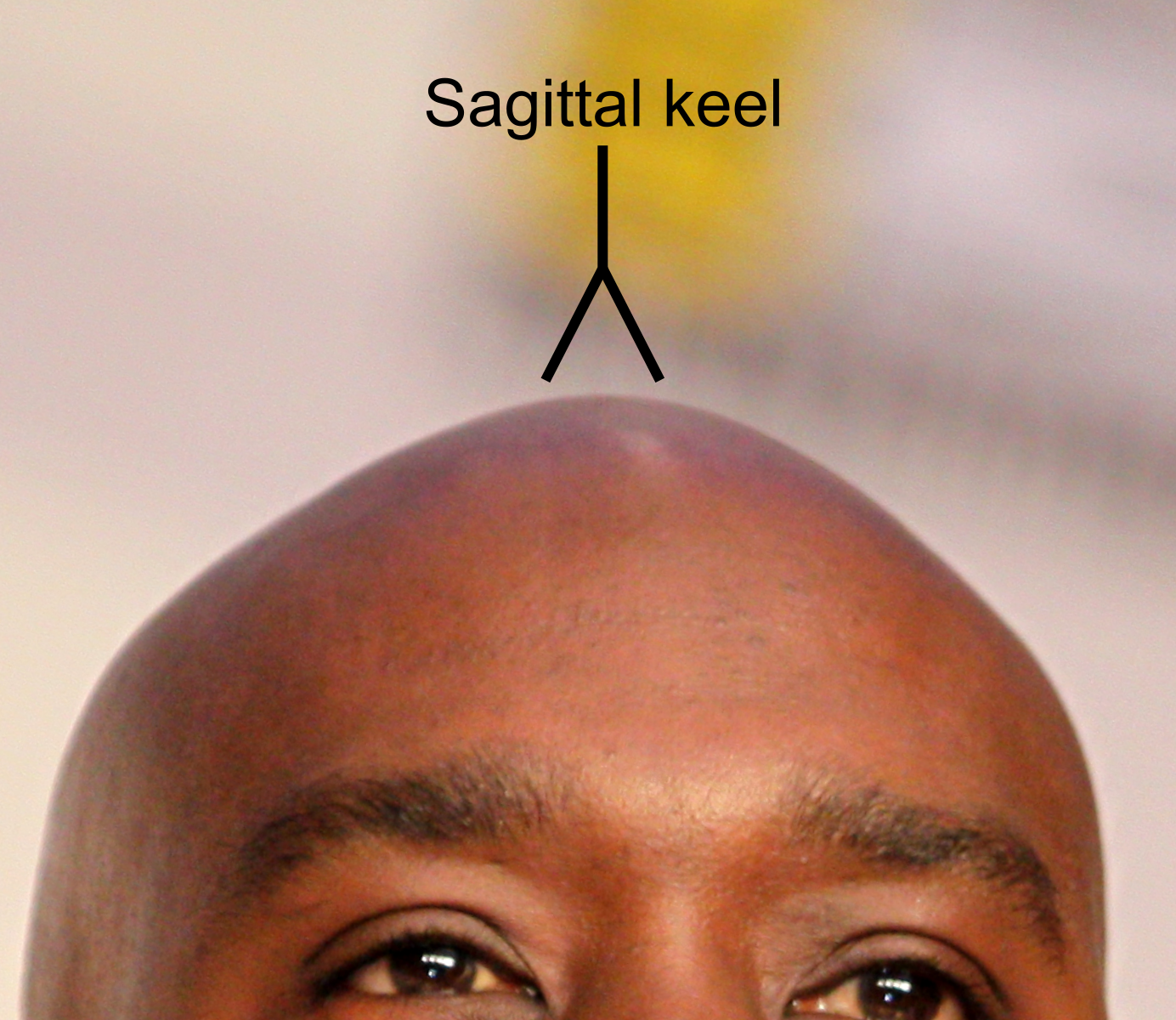Sagittal Keel on:
[Wikipedia]
[Google]
[Amazon]

 In the human skull, a sagittal keel, or sagittal torus, is a thickening of part or all of the midline of the
In the human skull, a sagittal keel, or sagittal torus, is a thickening of part or all of the midline of the

 In the human skull, a sagittal keel, or sagittal torus, is a thickening of part or all of the midline of the
In the human skull, a sagittal keel, or sagittal torus, is a thickening of part or all of the midline of the frontal bone
The frontal bone is a bone in the human skull. The bone consists of two portions.''Gray's Anatomy'' (1918) These are the vertically oriented squamous part, and the horizontally oriented orbital part, making up the bony part of the forehead, part ...
, or parietal bone
The parietal bones () are two bones in the skull which, when joined at a fibrous joint, form the sides and roof of the cranium. In humans, each bone is roughly quadrilateral in form, and has two surfaces, four borders, and four angles. It is named ...
s where they meet along the sagittal suture
The sagittal suture, also known as the interparietal suture and the ''sutura interparietalis'', is a dense, fibrous connective tissue joint between the two parietal bones of the skull. The term is derived from the Latin word ''sagitta'', meaning ...
, or on both bones. Sagittal keels differ from sagittal crest
A sagittal crest is a ridge of bone running lengthwise along the midline of the top of the skull (at the sagittal suture) of many mammalian and reptilian skulls, among others. The presence of this ridge of bone indicates that there are exceptiona ...
s, which are found in some earlier hominins
The Hominini form a taxonomic tribe of the subfamily Homininae ("hominines"). Hominini includes the extant genera '' Homo'' (humans) and '' Pan'' (chimpanzees and bonobos) and in standard usage excludes the genus '' Gorilla'' (gorillas).
The ...
(notably the genus ''Paranthropus
''Paranthropus'' is a genus of extinct hominin which contains two widely accepted species: '' P. robustus'' and '' P. boisei''. However, the validity of ''Paranthropus'' is contested, and it is sometimes considered to be synonymous with ''Aust ...
'') and in a range of other mammals. While a proper crest functions in anchoring the muscles of mastication to the cranium, the keel is lower and rounded in cross-section, and the jaw muscles do not attach to it.
Sagittal keels occur in several early human species, most noticeably in ''Homo erectus
''Homo erectus'' (; meaning "upright man") is an extinct species of archaic human from the Pleistocene, with its earliest occurrence about 2 million years ago. Several human species, such as '' H. heidelbergensis'' and '' H. antecessor ...
'', occasionally in ''Homo heidelbergensis
''Homo heidelbergensis'' (also ''H. sapiens heidelbergensis''), sometimes called Heidelbergs, is an extinct species or subspecies of archaic human which existed during the Middle Pleistocene. It was subsumed as a subspecies of '' H. erectus'' i ...
'' and in some Upper Paleolithic
The Upper Paleolithic (or Upper Palaeolithic) is the third and last subdivision of the Paleolithic or Old Stone Age. Very broadly, it dates to between 50,000 and 12,000 years ago (the beginning of the Holocene), according to some theories coi ...
''Homo sapiens
Humans (''Homo sapiens'') are the most abundant and widespread species of primate, characterized by bipedalism and exceptional cognitive skills due to a large and complex brain. This has enabled the development of advanced tools, culture, a ...
'' specimens. Most modern ''Homo sapiens'' groups have lost them, likely as part of the general trend toward thinning of the cranial bones to make room for larger brains during the Pleistocene
The Pleistocene ( , often referred to as the '' Ice age'') is the geological epoch that lasted from about 2,580,000 to 11,700 years ago, spanning the Earth's most recent period of repeated glaciations. Before a change was finally confirmed i ...
. However, there is a small portion of modern humans who have the feature, but its function and etiology
Etiology (pronounced ; alternatively: aetiology or ætiology) is the study of causation or origination. The word is derived from the Greek (''aitiología'') "giving a reason for" (, ''aitía'', "cause"); and ('' -logía''). More completely, e ...
are unknown. Patrick Stewart
Sir Patrick Stewart (born 13 July 1940) is an English actor who has a career spanning seven decades in various stage productions, television, film and video games. He has been nominated for Olivier, Tony, Golden Globe, Emmy, and Screen Actor ...
of '' Star Trek: The Next Generation'' and the martial artist Shi Yan Ming present good examples of modern humans (''Homo sapiens sapiens
Human taxonomy is the classification of the human species (systematic name ''Homo sapiens'', Latin: "wise man") within zoological taxonomy. The systematic genus, ''Homo'', is designed to include both anatomically modern humans and extinct vari ...
'') with this feature. The keel appears to be tied to general cranial robustness
Robustness is the property of being strong and healthy in constitution. When it is transposed into a system, it refers to the ability of tolerating perturbations that might affect the system’s functional body. In the same line ''robustness'' ca ...
and is more common in adult men than women and absent in children.
See also
* Occipital bun *Sagittal crest
A sagittal crest is a ridge of bone running lengthwise along the midline of the top of the skull (at the sagittal suture) of many mammalian and reptilian skulls, among others. The presence of this ridge of bone indicates that there are exceptiona ...
References
{{Reflist Skull